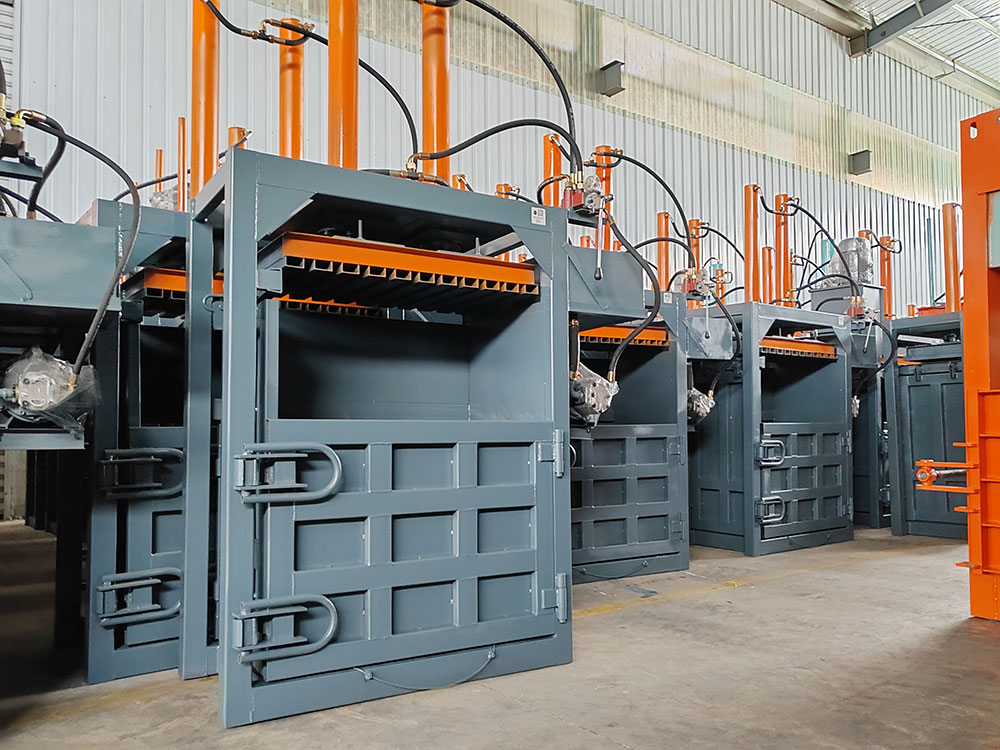Constant waste accumulation cripples production efficiency daily. Overflowing materials increase disposal costs by 40%. Industrial horizontal balers solve this by automating compaction, cutting storage space needs while boosting recycling revenue monthly.
Industrial horizontal balers compress materials using hydraulic cylinders with steel-frame containment, processing cardboards/plastics/metal scraps at 10-50 tons daily capacity to create transport-ready bales that reduce logistics costs by 60% in manufacturing facilities.

Choosing equipment requires understanding core concepts. This breakdown clarifies what distinguishes industrial balers. Now explore these systems’ definitions and mechanics.
What is an Industrial Baler?
Waste reduction budgets being exceeded? Manual methods fail at scale. Industrial balers become vital when processing over 2 tons daily, especially in paper mills or recycling hubs needing reliable throughput.
Industrial balers compress recyclables into dense blocks using hydraulic pressure, featuring structural steel frames and automated controls that withstand 80-150 tons force for continuous operation in warehouses or processing plants.

Critical Specifications and Application Scenarios
Industrial balers vary significantly by operation scale:
Classification by Capacity
| Type | Daily Capacity | Floor Space | Power Needs |
|---|---|---|---|
| Light-Duty | Under 5 tons | 15m² | 380V 3-phase |
| Medium-Duty | 5-20 tons | 25m² | 415V 3-phase |
| Heavy-Duty | 20-50+ tons | 40m² | 480V industrial grid |
Material Handling Abilities
-
Cardboard/Paper
Requires 50-80 tons pressure
Produces 500kg bales
Feed openings: 1.5m × 2m minimum -
Plastics/Film
Needs pre-crushing for fluffy material
Anti-static systems prevent fires
Moisture-resistant wiring essential -
Metal Scraps
150-ton presses essential
Manganese steel plates reduce wear
Oil-cooling systems mandatory
Shipping hub operators cut waste costs 70% after our site analysis matched baler size to throughput. Warning: Avoid undersized motors – they overheat at peak loads. Visit ShunYin Machinery for hydraulic pressure calculators.
How Does a Baler Work?
Random material piles cause dangerous work conditions. Unprocessed waste attracts pests. Understanding the compression cycle reveals why systematic operation prevents hazards.
Balers work through material feeding → hydraulic compression → bale binding/tie-off → ejection cycles, with PLC-controlled pressure ramps ensuring optimal density while monitoring sensors prevent overloads throughout operation.

Operation Phases and Safety Features
The workflow combines mechanical and electronic systems:
Work Cycle Breakdown
-
Loading Phase
- Workers feed materials through hopper
- Photo eyes detect fill-level limits
- Conveyor systems automate infeed
-
Compression Stage
- Hydraulic pumps build 200-300 bar pressure
- Cylinder force travels horizontally (horizontal models)
- Pressure sensors adjust for material resistance
-
Output Processing
-
Auto-tiers secure bales with steel wires Binding Type Bale Weight Material Suitability Wire Ties 300-800kg Cardboard/metals Plastic Strapping 200-400kg PET bottles/textiles - Ejector plates push bales onto rollers
-
Maintenance Protocols
- Daily: Check oil levels + fluid leaks
- Weekly: Inspect hydraulic hoses
- Monthly: Test safety doors/interlocks
When North American clients ignored maintenance, bearing failures caused $10k+ downtime. Remember: Lubricant grades vary by climate. WhatsApp 0086 13505379893 for climate-specific lubrication charts.
Conclusion
Industrial horizontal balers streamline waste via hydraulic force, while understanding specifications ensures ideal selection for facility scale and material types.








